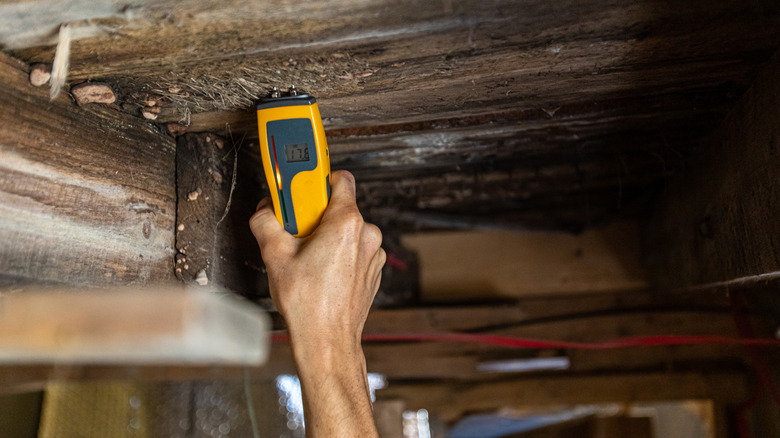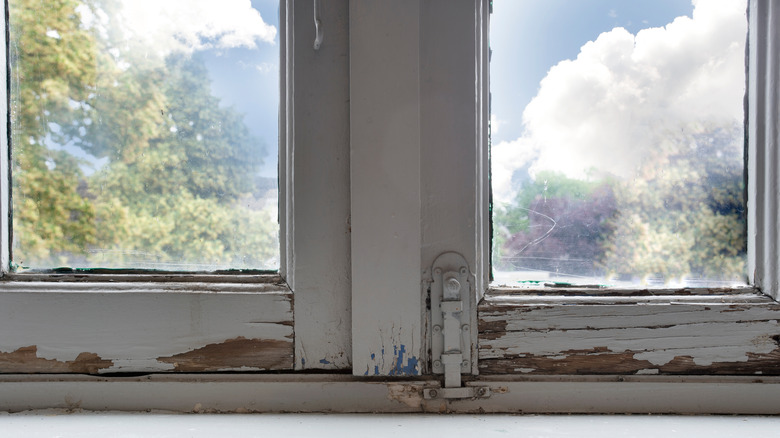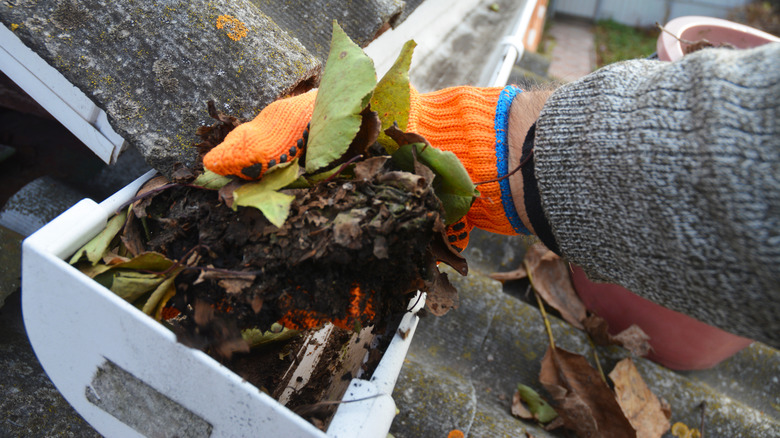How You Prevent Wood Rot Around Your Home
When it comes to preventable damage that can jeopardize your home, wood rot is definitely something for homeowners to keep an eye out for. In fact, according to Perma-Chink Systems, homeowners lose more of their houses due to wood rot than all other factors put together. Wood rot occurs when moisture, bare wood, and air combine to provide the perfect breeding ground for wood-destroying fungi. If left untreated, wood rot can actually spread over time and may lead to costly structural damage to your home, warns Houselogic.
Since fixing rotted wood can be expensive and labor-intensive work, preventing your home's wood from ever becoming rotted should always be your goal. As such, it's only natural that you pay special attention to wood that receives direct exposure to moisture. This can include wood siding, wood surfaces near windows, and wood fixtures near your sinks and bathtubs. Luckily, most of the ways to prevent wood rot are well within the capabilities of the average homeowner and require minimal DIY experience.
Look for signs of water damage
According to Houselogic, setting some time aside every year for a thorough home inspection can be a great way to find the problem spots that need to be addressed. For instance, if you see cracked caulking around your windows, bathroom fixtures, or exterior doors, you will want to take quick action to prevent moisture from getting inside. You'll also want to look carefully for any evidence of a roof leak or defective gutters since these issues can lead to extensive water damage that will threaten your home's wood foundation.
If your home has wooden siding, it's also important to walk around the perimeter and look for any compromised areas. According to American Way Exteriors, your wood siding should be sealed or painted regularly in order to prevent moisture from penetrating its protective barrier. Once water is able to find its way inside the boards, or even in between boards, your home's wood siding is at risk of experiencing wood rot.
Preventing wood rot
Once you've given your home a thorough inspection and everything is looking good, it's important to remember that there are still additional steps to help prevent wood rot. For instance, you might consider calling a professional if your outdoor decking, handrails, or window sills do not adequately shed water. According to The Craftsman Blog, outdoor surfaces that are not designed to shed water can be a case of wood rot waiting to happen. Additionally, you should countersink and plug any exposed screws and nails in your outdoor structures since these crevices can provide a perfect home base for wood-rotting fungi.
Although gutters tend to be unheralded when doing their job effectively, if they become clogged or leaky, your home can experience water damage incredibly quickly. As such, routinely cleaning your gutters is a great way to proactively prevent wood rot. You will also want to frequently check your gutters for leaks since these can quickly warp and rot the fascia board behind (per Houselogic).


